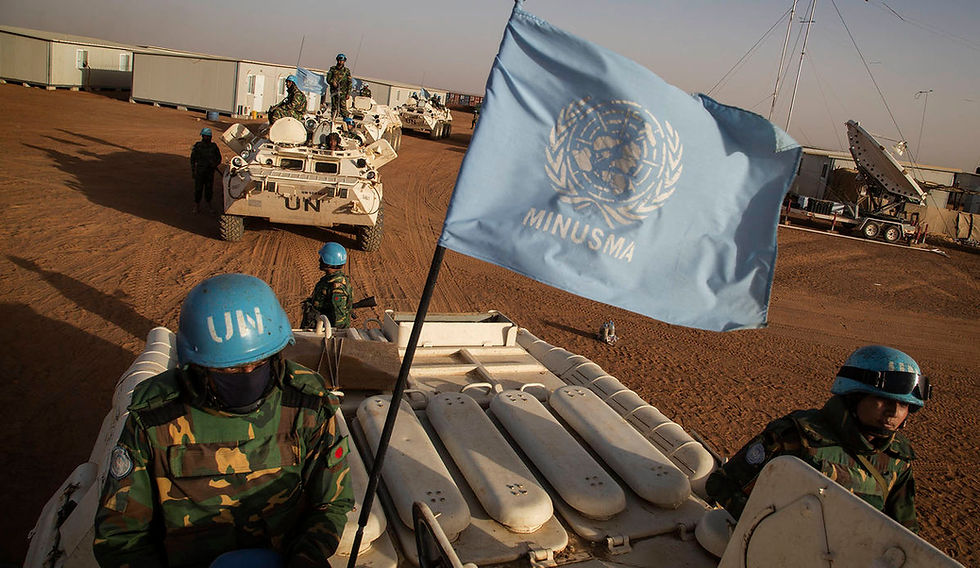The World is Over-armed and Peace is Under-funded!
- Khonibala Oinam
- Oct 7, 2024
- 4 min read

The movement on disarmament and arms control is due to the collective understanding and realization that a potential Third World War could destroy humankind in an instantaneous reaction, similar to global suicide. This potential war could be in the form of biological or nuclear weapons. Moreover, people no longer want to be associated with a dystopic setting of surviving under more significant potential threats of war. Historically, disarmament and arms control have been evident from the First World War, which signified that war has no victorious winner. Both sides of the war received a full fatal blow, considering the loss of lives, destruction, and a crucial economic hit.
The initiative of disarmament and arms control to bring a balanced international space has only one aim: to ensure world peace and stability. Two disastrous World Wars in the 1900s resulted from a failure and the inability to make collective arrangements over disarmament and arms control or peacebuilding. Consequently, the nuances of the two wars are intensely felt even today. It is crucial to understand that war leads to the displacement of thousands of people, destruction, a dwindling economy, and large-scale devastation. We understand that disarmament leads to a necessary act of laying down weapons completely, while arms control may not mean the same. The concept of arms control is an idea that suggests a type of cooperation between usual rivals or hostile powers in matters of military strategy to reduce the likelihood of conflict with the hopes of lessening its destructive potential. Furthermore, this heavily implies that nations must routinely check on control arms in their respective nations.
By the end of the war, the isolation policy of the United States had no choice but to intervene. Due to the massive death and destruction caused by World War I, the American population and its government concentrated on finding solutions to avert future wars. Disarmament would take away the means of fighting and put a stop to the "merchants of death," who were considered to profit from and encourage conflict. An unparalleled disarmament movement started in the US. The introduction of disarmament into the League of Nations Covenant, from 1922 to 1935, to "outlaw" war or the ambivalent support of the League of Nations' disarmament efforts were just a few interwar endeavors in which America participated. President Woodrow Wilson emphasized disarmament in his Fourteen Points speech in January 1918. He also supported it as Article Eight of the League of Nations Covenant. Wilson did not give arms reduction a high priority. However, he was sure that it was in the interest of the United States, as stated in point four, which asked for "sufficient guarantees provided and taken that national armaments will be lowered to the lowest point consistent with domestic safety." Even a hazy commitment to global disarmament would allow for the imposition of arms controls on Germany and her allies. The most thorough and strict disarmament requirements in modern history were placed on Germany by the Treaty of Versailles, negotiated after the war. It severely limited Germany's armed forces and navy, prohibited airplanes and submarines, and limited weapons production, importation, and storage. However, there was no general disarmament.
Additionally, nations work on their national interests because there is no permanent friendship or enemy in international relations. The disarmament goals were soon hindered because countries believed that many nations were not disarming reasonably or at an equal rate. Moreover, the inevitable emergence of a series of peacekeeping initiatives was led by disarmament, ensuring no one country remains above another regarding weapons and military equipment.
In situations when the superpowers' interests directly conflicted during the Cold War, the United Nations was mostly powerless to intervene. If given the chance, the UN might be able to prevent conflicts between smaller nations and the gravitational pull of the superpowers' competition. The principles of preventive diplomacy were laid forth by Hammarskjöld, the then-Secretary General, and are still in use today. The most remarkable instance of preventative diplomacy in the history of the UN must be his part in averting a nuclear conflict over the Cuban Missile Crisis. Dramatic materials about his work can be found in the UN archives. Such are the issues and hurdles international organizations like the UN face when concluding on disarmament values.
Even in contemporary times, particular regional wars are very much present, but a direct conflict that might involve several other nations has not been sighted. The current era of globalization marked the end of the hostilities that the Cold War produced. As a wave of liberalization opened toward the flow of the economy, interdependent cooperation between nations moved from conflict to cooperation. It also led to disarming strategic points regarding nuclear weapons and other weapons of mass destruction. On the international scene, the conventional methods of imposing test ban treaties on nuclear weapons and non-proliferation agreements have started marking a new trend in disarmament initiatives. This resulted in the two former hostile countries, the US and Russia, cooperating on disarmament values. A few significant reasons why disarmament in the contemporary scenario is necessary are due to several factors: the image of a particular country on a global scale, public opinion, the emergence of international NGOs, organizations and the need to protect and understand state sovereignty and respect foreign policies of existing countries.






Comments